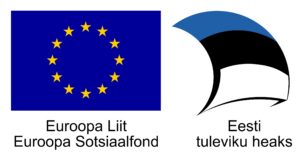Principles for the Use of AI at Väike Päike Lasteklubi
At Väike Päike Lasteklubi, we use artificial intelligence (AI) consciously and responsibly to provide children with the best possible early childhood education and to support parents and teachers in monitoring and fostering each child’s development. For us, AI is a tool—not a decision-maker—that helps us better understand the individual needs of every child. Our work is guided by the following principles:
- The child’s well-being comes first: AI helps identify a child’s strengths and areas needing support, but decisions are always made by the teacher, who considers the child’s development and well-being.
- Cooperation with families: Parents gain a clearer overview of their child’s development thanks to data-based recommendations and structured information. Transparency and trust-based collaboration are of central importance to us.
- The teacher’s professional role: AI supports the teacher’s decisions by offering analytical insights. Pedagogical choices, however, are always made by humans.
- Knowledgeable staff: Teachers receive training and guidance to use AI effectively, critically, and professionally.
- Ethics and responsibility: We use AI in a transparent, fair, and responsible manner. Teachers stay in charge and always make the final decisions.
- Data protection: Children’s data is processed securely and in full compliance with the law. AI supports analysis, while human oversight remains in charge.
- Risk Assessment: The risks associated with the use of AI are regularly assessed and managed. All applications are thoughtful and responsible.
Digital Competence
As part of the program, each month, one digital device is introduced in the group and used in an integrated way across various learning areas. During the program, children become familiar with the following tools: Go and Glow robotic turtle, Ozobot, Bluebot, sound-recording talking buttons, Makey Makey, Qobo, LEGO Coding Express, TTS Terrain Robot, Sphero Bolt, Matatalab, Dash, and Tale-Bot. The lesson plans for the activities conducted with these digital tools form a collection of ideas used as teaching materials for Väike Päike staff.
Väike Päike participated in the project “Diverse and Quality Education” coordinated by the State Shared Service Centre. The overall goal of the project is to support the implementation of the objectives outlined in Estonia’s Lifelong Learning Strategy 2020: applying a changing learning approach, developing students’ digital competences, advancing teachers’ subject-specific digital skills, and contributing to shaping education to meet the real needs of the labour market. The total cost of the project was €2,409.50, of which €2,048.07 was funded by support. 
For us, this meant the addition of 17 new robots (9 different types), enabling us to offer digital learning opportunities to even more children. The use of robotics is not an end in itself for our teachers; rather, it serves the purpose of making learning more engaging and diverse for children. The new tools significantly expand our existing collection of digital learning aids, allowing different groups to use robotics devices simultaneously. Children can carry out their learning projects using a variety of robotic tools both in group activities and in extracurricular clubs.

